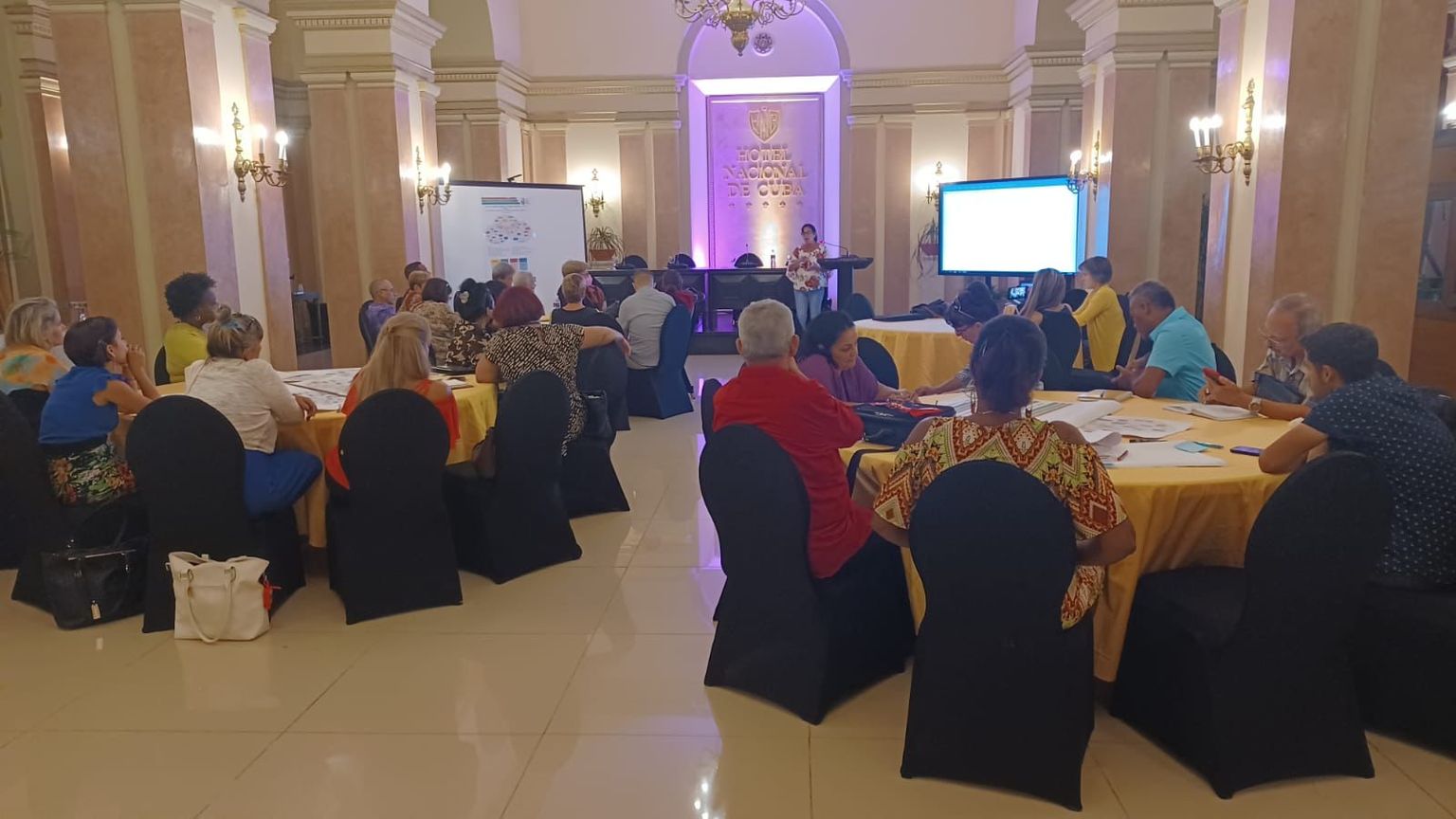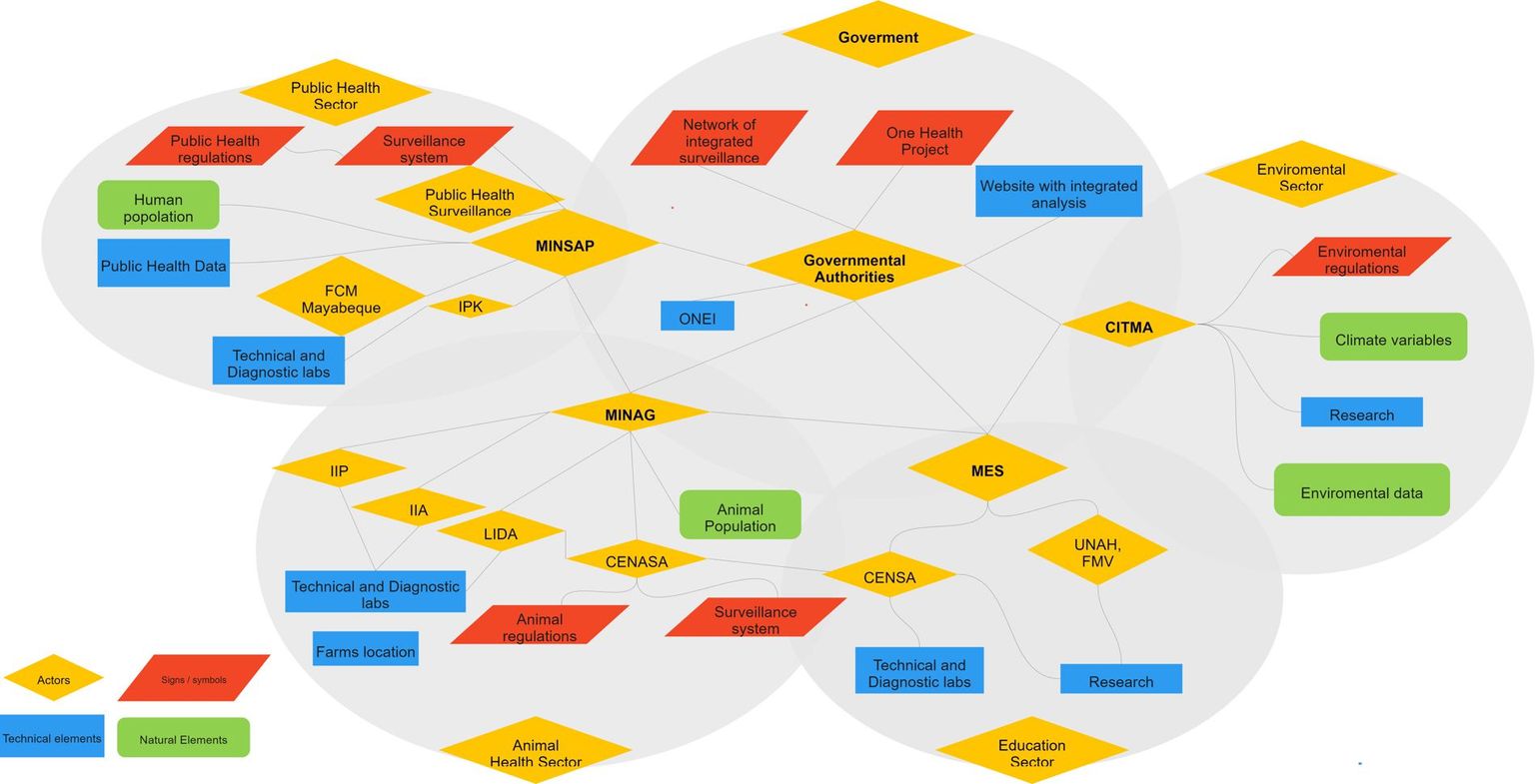Constellation analysis applied for an Integrated Health Surveillance System in Cuba
Goal & approach of the project
Our team aimed at designing an Integrated Surveillance Systems for Influenza virus with zoonotic potential (animal-to-human disease transmission), and for Antimicrobial Resistance (AMR) in Cuba. Following a cross-sectoral and transdisciplinary approach, we engaged multiple stakeholders through participatory workshops and used the Constellation Analysis (CA) tool to identify and visualize the elements of the ongoing veterinary and public health surveillance systems that are currently in place for AMR and Influenza. Furthermore, we used the CA to discuss potential future Integrated Surveillance Systems.
Why we like CA
CA is useful for analyzing complex systems through the systematic evaluation of four key system elements: actors, natural elements, technical elements and signs/symbols. Moreover, the CA requires limited training of the participants, is user-friendly, enables concept visualization and can be applied to diverse problems (not only health-related). The CA favors the visualization of involved elements and only requires papers, pens and post-its to be implemented.Using a CA is helpful for identifying the strengths and weaknesses of a surveillance system and for enhancing its effectiveness, as Illustrated by our two Cuban cases, and we can confirm its beneficial effects.In conclusion, CA is a highly reliable methodology due to due to its holistic perspective, ability to uncover emergent properties, incorporation of diverse data sources, adaptability to change, and transparency.
Why stakeholders like CA
Stakeholders were introduced to the CA during the workshops. In feedback given to the facilitator, participants highlighted that the methodology is very promising as it raises awareness and organizes information in an effective and visually appealing way. Specifically for complex problems with various elements, such as a surveillance system, there was a general agreement that it is an excellent method to create an editable draft, as well as to define the importance of the elements according to their location within the constellation; The most important elements can be placed in the middle of the visualization and the relationships between them depicted, whereas less important elements can be placed more peripheral. Consequently, the CA can be considered as a practical working, communication and visualization tool, as it favored discussion and fostered a common understanding between participants.

Effects of the CA
The CA enabled us to generate an in-depth understanding of the current and potential future elements relevant for the development and implementation of OHSS in Cuba. Based on the established collaboration across disciplines and sectors, the network and findings of the CA will be used as a basis for the design of the future Influenza-OHSS and AMR-OHSS. In addition, the CA can be used to represent different problems and is compatible with other participatory approach methods, such as brainstorming.


Challenges & potential drawbacks
Although the CA is a reliable methodology, some challenges & potential drawbacks regarding time required and knowledge integration have to be considered:
- CA is work intensive post workshop, especially as in our case the participants were divided in subgroups. All resulting CA’s needed to be merged into one, which can be quite arduous.
- Training is required for the facilitators to work with this methodology as it is quite complex. It needs a clear understanding of what belongs to the four different types of elements (actors, natural elements, technical elements and signs/symbols).
- CA requires a meeting with the stakeholders which can be hard to organize since it is time consuming for the participants and can be costly (in case there are many stakeholders joining the workshop). Moreover, since a one-day workshop is required to ensure that the stakeholders grasp the full advantages of the method, time can be a limiting factor for its use.
- The CA showcases a moment in time (those stakeholders, at that time) and it is constantly evolving.
- As for any td method, the method needs to be adapted to each country’s context plus governmental organization/structure. In our case, we took into consideration the country’s public health infrastructure, limitations and existing partnerships and plans of action.
Nevertheless, the use of CA in our project was successful and has shown its potential to lay a basis for further design of OHSS. By employing this analytical approach, researchers and decision-makers can gain deeper insights into complex systems, make informed decisions, and develop effective strategies for addressing complex challenges which is why we recommend the use of this technique and will consider it in future projects.
References
This experience report is based on this 'One Health Case': Damarys de las Nieves Montano Valle, Oshin Ley García, Beatriz Delgado Hernandez, Marian Irian Percedo Abreu, Dianelys Quiñones Pérez, Laura Cunha Silva, Luís Pedro Carmo, John Berezowski, Pastor Alfonso Zamora, Salome Dürr (2023): Toward a One Health Surveillance System in Cuba: Co-Productive Stakeholder Engagement.

